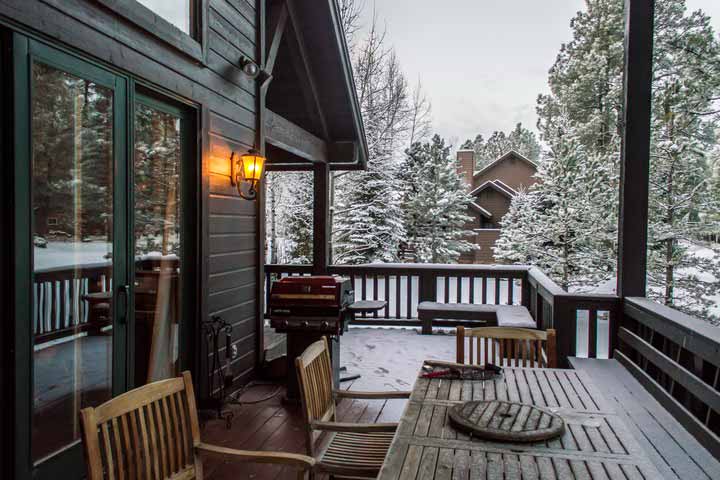Presidential Heating & Air Conditioning
Gaithersburg HVAC Contractors
Share
Share on FacebookTweet
Tweet this0Share
Share on LinkedIn0 shares on LinkedIn Winter can be a tough time on your budget. Between the holidays and the heating bill, it is no wonder that funds are often tight come January. Thankfully, however, you can still reduce your heating bill for the remainder of the winter by doing some simple things around the house to increase your home efficiency. Keep heat in and cold out by using the following tips.
Winter can be a tough time on your budget. Between the holidays and the heating bill, it is no wonder that funds are often tight come January. Thankfully, however, you can still reduce your heating bill for the remainder of the winter by doing some simple things around the house to increase your home efficiency. Keep heat in and cold out by using the following tips.
Cover Drafty Windows
About thirty-five percent of your heat will escape through the walls and gaps near windows and doors this winter. You can decrease the amount of heat that leaves through the windows by covering your windows with plastic. Plastic window kits are relatively inexpensive and easy to install. They are often worth the time and effort to increase the efficiency of your home. Just be sure to keep them tight to the window to make them as useful as possible.
If you do not already have window treatments, you may want to consider tighter fitting, thicker window treatments that will help keep the heat in and the cold out. Blinds will work, but thicker curtains often work best.
Be sure to also take advantage of the sunny days in the winter. Open up the window treatment to allow the warmth from the sun to enter the home. Just be sure to close the curtains back up as soon as the sun goes down.
Add Extra Insulation
Heat rises, and you may not realize just how much heat is escaping through the roof of your home. In fact, up to twenty-five percent of heat produced by your furnace or other heat source leaves through the ceiling. You can curb the amount of heat that leaves by adding extra insulation to the attic area.
The type of insulation you use will depend on whether you have a simple crawl space or a full loft. It may also depend on how you use the space, i.e., do you need to be able to walk around up there? Simple insulation products are often inexpensive, and they usually pay for themselves in two years or less.
Depending on the age of your home, you may also benefit by adding extra insulation to the walls as well. For homes built before the 1930s, you may have cavity walls, which have gaps or spaces between the brick or cement. They are easy to insulate because you can simply inject the hole with an insulation material. It may take a professional to install it, but it is often worth the price to keep the heat in and the cold out. You may also be able to add additional insulation to solid walls as well, but the process is a little trickier.
Strategically Use Your Heating and Cooling Devices
Most people do not think of a ceiling fan as a tool to heat the home, but they can be! If you have better ventilation in the home, then you can increase the home’s efficiency. Ceiling fans increase airflow. If you set them to clockwise, then that will push the warm air back down in the winter, preventing warmer air from reaching the roof and leaving the home. Keeping them on the low setting is often the most effective.
You can also adjust your thermostat so that your furnace only heats when you need it. For example, if you are away from the house for eight hours per day, you can set your thermostat to a lower temperature while you are away. In fact, the U.S. Department of Energy reports that reducing the temperature for at least eight hours per day by 10 to 15 degrees can save about 10 percent per year on heating costs. If you choose to decrease the heat at night, you may want to consider heavier blankets and thicker pajamas.
If you have large storage areas or guest rooms that you do not regularly use, you can cut the heat off to those areas to decrease the heating bill. Close the vents in those rooms to make your duct system more efficient in the other rooms of your home.
You should also be sure that your furnace’s filters are changed regularly. Dirty filters result in lower efficiency and restricted airflow.
Consider Adding Moisture to the Air
When you are heating your home in the winter, the air can get very dry. This is unfortunate because moist air actually holds heat better and generally feels warmer. You can increase the moisture in your home by investing in a humidifier. You can get a smaller humidifier for individual rooms or attach a humidifier to the furnace. You can also add plants to your home to increase the humidity leaves as well.
For More Tips on Home Efficiency in the Winter
If you have an older heating system, another way to increase home efficiency is to make an energy-efficient upgrade. Call Presidential Heat and Air at (301) 719-3315 for more information or to get a free estimate on how you can keep the heat in and cold out this winter.

